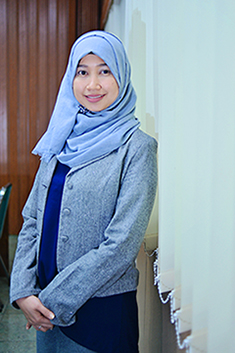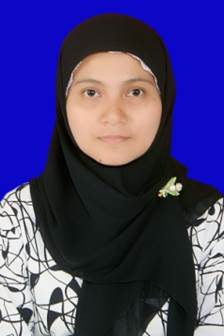KLT-Bioautografi Ekstrak Etil Asetat Supernatan Hasil Fermentasi Streptomyces G Isolat Tanah Rumah Kompos Bratang Surabaya
Downloads
Al-Ansari, M., Alkubaisi, N., Vijayaragavan, P. & Murugan, K. (2019). Antimicrobial Potential of Streptomyces Sp. to the Gram Positive and Gram Negative Pathogens. Journal of Infection and Public Health; 12; 861–866.
Al-Dhabi, N. A., Ghilan, A. M., Esmail, G. A., Arasu, A. V., Duraipandiyan, V. & Ponmurugan, K. (2019). Bioactivity Assessment of the Saudi Arabian Marine Streptomyces Sp. Al-Dhabi-90, Metabolic Profiling and Its in Vitro Inhibitory Property against Multidrug Resistant and Extended-Spectrum Beta-Lactamase Clinical Bacterial Pathogens. Journal of Infection and Public Health; 12; 549–56.
Awad, H. M., El-Sahed, K. & El-Nakkadi, A. (2009). Isolation, Screening and Identification of Newly Isolated Soil Streptomyces (Streptomyces Sp. NRC-35) for b-Lactamase Inhibitor Production. World Applied Sciences Journal; J7; 637–646.
Choma, I. (2005). The Use of Thinl-Layer Chromatography with Direct Bioautography for Antimicrobial Analysis. Chromatography Online; 18; 482-488.
Cuesta, G., García-de-la-Fuente, G., Abad, M. & Fornes, F. (2012). Isolation and Identification of Actinomycetes from a Compost-Amended Soil with Potential as Biocontrol Agents. Journal of Environmental Management; 95; S280–S284.
Gebreyohannes, G., Moges, F., Sahile, S. & Raja, N. (2013). Isolation and Characterization of Potential Antibiotic Producing Actinomycetes from Water and Sediments of Lake Tana, Ethiopia. Asian Pacific Journal of Tropical Biomedicine; 3; 426–435.
Hopwood, D. A. (2007). Streptomyces in Nature and Medicine: The Antibiotic Makers. Oxford; University Press.
Isnaeni, Astuti, A. & Yuwono, M. (2017). Validation of Thin-Layer Chromatography-Bioautographic Method for Determination of Streptomycin. Jurnal Farmasi dan Ilmu Kefarmasian Indonesia; 4; 34–38.
Isnaeni, Kusumawati, I., Warsito, M. F., Darmawati, A. & Mertaniasih, N. M. (2016). Antimicrobial Activity of Streptomyces Sp. Isolates from Vegetable Plantation Soil. Berkala Penelitian Hayati; 21; 69–74.
Kharat K. R., Kharat A. & Hardikar, B. P. (2009). Antimicrobial and Cytotoxic Activity of Streptomyces sp. from Lonar Lake. African Journal of Biotechnology; 8; 6645-6648.
Nampoothiri, K. M., Ramachandran, S., Soccol, C. R. Pandey, A. (2002). Advances in Fermentation Technology. International Sugar Journal; 104; 493–499.
Pandey, B., Prakash, G. & Vishwanath, P. A. (2004). Studies on the Antibacterial Activity of the Actinomycetes Isolated from the Khumbu Region of Nepal. Journal of Applied Microbiology ;12; 421–423.
Singh, P. N. N. & Pandey, A. (2009). Biotechnology for Agro-Industrial Residues Utilisation. Dordrecht: Springer.
Valli, S., Suvathi, S. S, Aysha, O. S., Nirmala, P., Kumar, P. V. & Reena, A. (2012). Antimicrobial Potential of Actinomycetes Species Isolated from Marine Environment. Asian Pacific Journal of Tropical Biomedicine; 2; 469–473.
Warsito, M. F., Nasution, N. E., Merthaniasih, N. M., Poernomo, A. T., Fairuz, D. & Hanifah, A. (2017). Antibacterial Activity of Butanol Extract from Cell Free Fermentation Broth of Streptomyces Sp. Isolated from Vegetable Plantation Soil. Research Journal of Pharmaceutical, Biological and Chemical Sciences; 8; 1921–1927.
Yücel, S. & Yamaç, M. 2010. Selection of Streptomyces Isolates from Turkish Karstic Caves against Antibiotic Resistant Microorganisms. Pakistan Journal of Pharmaceutical Sciences; 23; 1–6.
Zothanpuia, A., Passari, K., Preeti, C., Vineet, K., Mishra, B. K. & Bhim, P. S. (2018). Production of Potent Antimicrobial Compounds from Streptomyces cyaneofuscatus Associated with Fresh Water Sediment. Frontier Microbiology; 10; 1681.
1. The copyright of this journal belongs to the Editorial Board and Journal Manager with the author's knowledge, while the moral right of the publication belong to the author.
2. The formal legal aspect of journal publication accessibility refers to the Creative Commons Attribution-Non-Commercial-Share Alike (CC BY-NC-SA), which implies that the publication can be used for non-commercial purposes in its original form.
3. Every publication (print/electronic) is open access for educational, research, and library purposes. In addition to the objectives mentioned above, the editorial board is not responsible for copyright infringement


.jpg)















